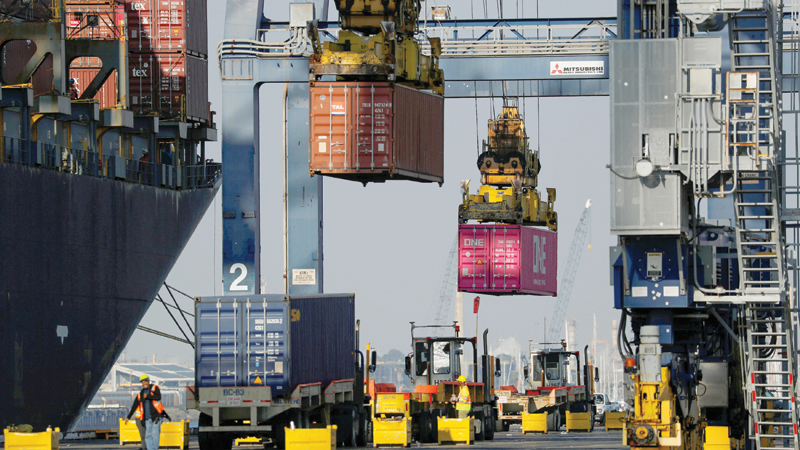

WASHINGTON: The US trade deficit dropped to its lowest level in nearly 1-1/2 years in October, suggesting trade could contribute to economic growth in the fourth quarter, though a broad decline in imports hinted at a slowdown in domestic demand.
Still, consumer spending is likely to remain supported by a strong labour market. Other data on Thursday showed the number of Americans filing claims for unemployment benefits unexpectedly fell last week, hitting their lowest level in seven months.
The reports countered data this week showing manufacturing activity contracting for a fourth straight month in November, a slowdown in growth in the services sector as well as a drop in construction spending in October. The latest data suggested the economy was growing at a moderate pace rather than stall speed.
The Commerce Department said the trade deficit tumbled 7.6 per cent to $47.2 billion, the smallest since May 2018, as both imports and exports of goods declined. It was the second straight monthly drop in the trade bill and the per cent drop was the biggest since January.
The decreases in imports and exports suggested the White House’s “America First” agenda, marked by a 17-month trade war with China, was reducing trade flows, which in the long run is detrimental to domestic and global growth.
“Shrinking the trade deficit by cutting imports even faster than you cut exports is obviously not a sustainable long-term path to drive growth for any economy,” said Tim Quinlan, a senior economist at Wells Fargo Securities in Charlotte, North Carolina.
Economists polled by Reuters had forecast the trade gap narrowing to $48.7 billion in October.
The goods trade deficit with China fell 1.1 per cent to $31.3 billion, with imports unchanged and exports increasing 3.4 per cent.
The goods trade gap with the European Union jumped 20 per cent to $16.4 billion, with imports surging to a record high.
While Washington and Beijing are working on a “phase one” trade deal, the United States has ratcheted up tensions with other trade partners including Brazil, Argentina and France.
President Donald Trump has defended the tariffs as necessary to protect domestic manufacturers from what he says is unfair foreign competition. Trump has accused trading partners, including China, the European Union, Brazil and Argentina of devaluing their currencies at the expense of US manufacturers.
Ironically, the United States has a goods trade surplus with Brazil, which swelled in October to its highest level since March 2014. It is also running a goods trade surplus with Argentina. The goods trade surplus with South and Central America hit a record high in October.
The dollar was weaker against a basket of currencies, while US Treasury yields rose. US stocks were trading lower amid a lack of new developments in US-China trade talks. Trade tensions have undermined business investment, which together with slowing growth overseas has led to a recession in manufacturing.
Oman Observer is now on the WhatsApp channel. Click here



